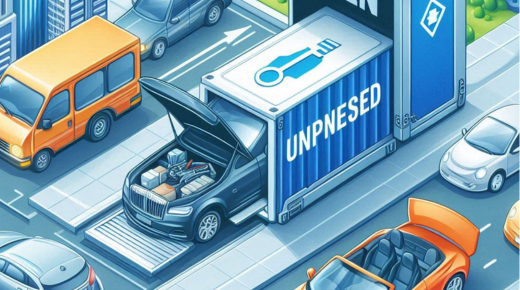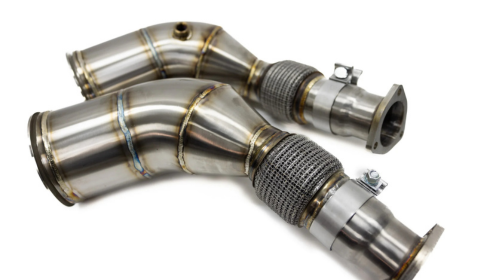When it comes to shipping your vehicle, one of the most important decisions you’ll need to make is whether to choose open or enclosed transport. Each option has its benefits and drawbacks, and the right choice depends on several factors, including your car’s value, your budget, and your personal preferences. In this article, we’ll break down the key differences between these two vehicle shipping options to help you make the best car transport decision.
1. Understanding Open Car Transport
Open car transport is the most common and widely used method for vehicle shipping. In this option, your car is loaded onto an open trailer along with several other vehicles. The trailer is exposed to the elements, meaning your car will be out in the open during the entire journey.
Benefits of Open Transport:
- Affordability: Open transport is the more cost-effective option. It’s typically 30% to 50% cheaper than enclosed transport due to its higher availability and ability to carry more vehicles at once.
- Availability: Since open transport is more popular, it’s easier to find a carrier with open slots for your shipment. This can lead to faster pick-up and delivery times, making it a great option if you need your vehicle shipped quickly.
- Standard Vehicles: If you’re shipping a standard car, SUV, or truck, open transport is usually the best choice. It’s reliable, safe, and cost-effective for everyday vehicles that don’t require extra protection.
Drawbacks of Open Transport:
- Exposure to Elements: Because your car will be exposed to weather conditions like rain, snow, and dust, it may arrive dirty or need a cleaning after delivery. However, significant damage due to the elements is rare.
- Potential for Road Debris: While your car will be securely fastened to the trailer, it can still be exposed to minor road debris like rocks or gravel, which could cause small scratches or dents.
2. Understanding Enclosed Car Transport
Enclosed car transport offers additional protection by placing your vehicle inside a fully covered trailer. This is often the preferred choice for high-value, luxury, or classic cars that need extra care during transport.
Benefits of Enclosed Transport:
- Maximum Protection: Your car is fully shielded from weather, road debris, and other hazards. This makes enclosed transport the best option for protecting high-value vehicles, especially during long-distance or cross-country shipments.
- Ideal for Luxury and Classic Cars: If you’re shipping a luxury, exotic, or classic car, enclosed transport ensures that your vehicle arrives in pristine condition. This method provides peace of mind for those with collectible or highly valuable vehicles.
- Special Handling: Enclosed carriers often provide additional services, such as lift gates for loading low-clearance vehicles and specialized handling for delicate cars. This extra attention helps ensure that your car is transported safely and securely.
Drawbacks of Enclosed Transport:
- Higher Cost: Enclosed transport is more expensive than open transport, typically costing up to 50% more. This higher price is due to the additional protection and the fact that enclosed trailers carry fewer vehicles, leading to higher per-car transport costs.
- Limited Availability: Enclosed carriers are less common than open carriers, meaning it may take longer to find an available slot for your shipment. This could result in longer waiting times for pick-up and delivery.
3. Factors to Consider When Choosing Between Open and Enclosed Transport
When deciding between open vs enclosed transport, consider the following factors:
- Value of the Vehicle: If you’re shipping a standard car that you drive daily, open transport is likely the best option. However, if your vehicle is a high-value luxury car, an antique, or a classic car, the added protection of enclosed transport is worth the extra cost.
- Weather Conditions: If you’re shipping your car during a season with severe weather, such as winter storms or heavy rains, enclosed transport may provide better peace of mind. Open transport works well in milder weather conditions or for shorter routes.
- Budget: If keeping costs low is your top priority, open transport is the more affordable option. It’s cost-effective for most standard vehicles and provides reliable service. If your budget allows for more flexibility and your vehicle needs extra protection, enclosed transport may be worth the investment.
- Distance: For long-distance or cross-country shipping, where your car will be on the road for several days, enclosed transport may be the safer option, especially for valuable or sensitive vehicles. Shorter distances may not require the same level of protection.
Choosing between open and enclosed transportdepends on your vehicle’s needs, your budget, and your level of comfort with the transport process. For most standard vehicles, open transport is a safe, affordable, and efficient option. However, if you’re shipping a luxury, classic, or high-value car, the added protection of enclosed transport may be worth the higher price. By carefully considering your vehicle’s value, the shipping conditions, and your budget, you can make the best car transport decision for your unique situation. Some rent a car companies use auto transport to deliver cars to an address.




























+ There are no comments
Add yours